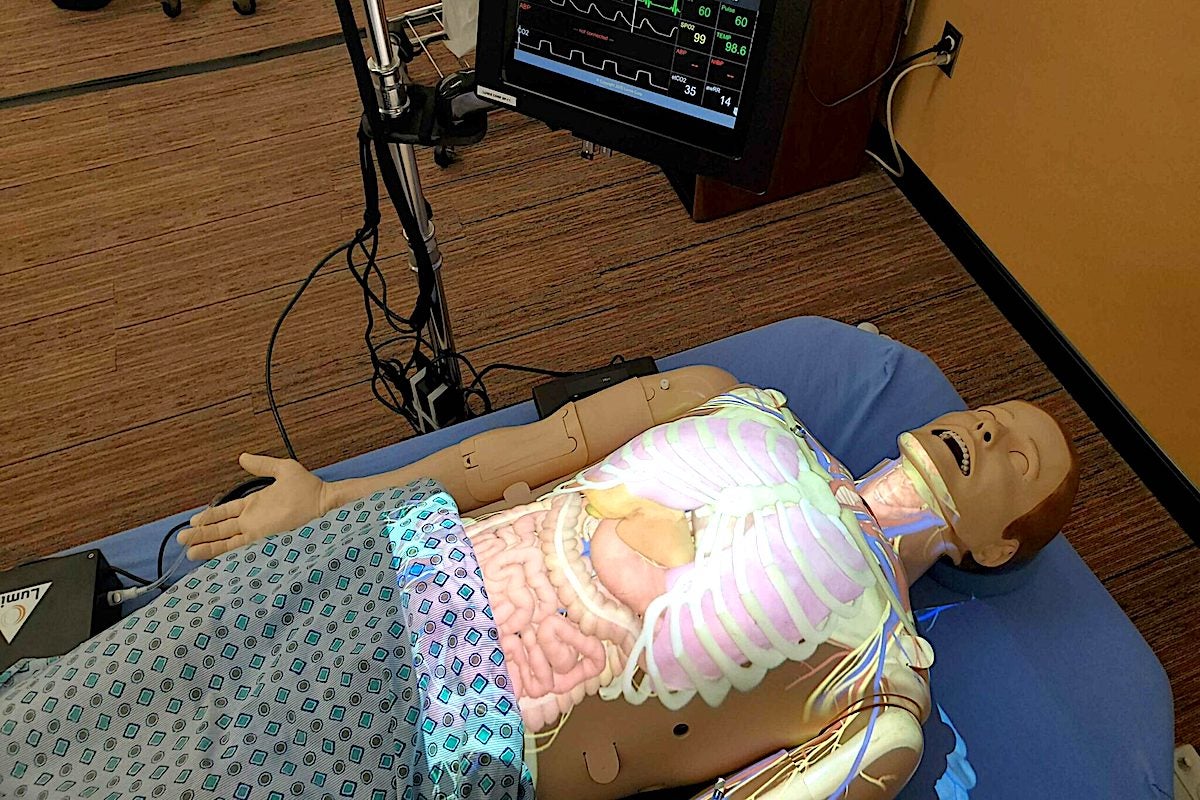The opioid crisis has been significantly exacerbated during the ongoing COVID-19 pandemic. The CDC’s National Center for Health Statistics has a reported a 35% increase in the number of estimated overdose deaths from opioids during the period April 2020-21 when compared to the same period the year before.
As the battle against opioid overdose deaths continues, an interdisciplinary team of researchers from the College of Medicine has partnered with a healthcare technology company, Lumis Corp, to create a simulation-based training solution to help address the national opioid crisis.
Lumis was awarded a $1.7 million R43 grant from the National Institute on Drug Abuse (NIDA) at the National Institutes of Health, with UCF receiving a subaward. The project is co-led by Anya Andrews, associate professor of medicine and director of research initiatives at the College of Medicine and Douglas Nelson, chief technology officer at Lumis Corp.
“The ultimate goal is to improve outcomes for people at risk for opioid misuse and overdose through training for healthcare workers, first responders, and lay persons like family members,” Andrews says.
Prior to receiving this grant, Andrews and her team led an initiative to develop an immersive learning simulation system for opioid risk management training in an interprofessional environment (STORM-IPE). It is a computer-based simulation system designed to train medical students and healthcare professionals in pain assessment, opioid risk assessment, and treatment and monitoring of patients with chronic pain. Students interact with a virtual patient, learn about the patient’s symptoms and associated conditions while trying to assess and mitigate the patient’s opioid risk.
“My colleagues and I came up with the idea to develop an immersive learning simulation for interprofessional education because management of chronic conditions requires teamwork between members of different health professions,” Andrews says. “We created a prototype of the simulation focusing on opioid risk management training particularly in response to the ongoing opioid crisis with the intent to foster effective communication and shared decision making with patients and members of an interprofessional team (e.g., nurses, counselors, pharmacists, and others).”
The NIDA-funded project integrates STORM-IPE with the Lumis InSight Platform, including Augmented Reality Training for Overdose (ART-OD) prevention curriculum. The combined efforts will result in a new integrated learning solution for opioid risk education and naloxone administration that will be tailored to the training needs of healthcare professionals, first responders, and lay people (family members, caregivers, etc.) who are on the frontlines of the ongoing opioid crisis.
“We are very excited for this opportunity to collaborate with Dr. Andrews and her team at the College of Medicine towards integrating our two innovative technologies to provide accessible, engaging, and immersive learning experiences across various stakeholder populations in the harm reduction ecosystem,” says Nelson.
“The augmented reality aspect in our case is based on the projection of human anatomy onto a part-task manikins trainer like the ones we use for clinical skills training,” Andrews says. “For example, using Lumis’ projection-based augmented reality InSight Platform, we can illustrate the patient’s breathing as well as the changes in facial color, lips, or pupil dilation to simulate symptoms of an opioid overdose.”
Together, the two training modalities will simulate opioid overdose scenarios featuring patients in various stages of consciousness/physiologic deterioration that require life-saving skills developed during the training. It will help train healthcare professionals, first responders, and lay people to identify opioid overdose risk factors, recognize the signs and symptoms of an overdose, and learn how to respond to and treat an overdose.
“Our goal is to advance the integrated solution to deliver an effective and engaging learning experience,” says Andrews. “We want to build new scenarios that will be tailored for each of the target learner populations. We also plan to test the scenarios in a simulation center environment and learn from the trainees in terms of the usability of the training solution, the perceived usefulness, and the utility of this approach.”
Andrews says the team is also collaborating with healthcare professionals, first responder groups and harm reduction organizations and seeking their input in designing the training solution.
“We believe technology like this can be used in a variety of different contexts,” Andrews says. “We have already been thinking about other areas, such as suicide prevention, COVID-19 response readiness, and rare disease diagnostics – anything that deals with complex healthcare challenges requiring sound decision making and effective interprofessional teamwork. We look forward to working with representatives of the key stakeholder groups from all these communities to help guide the design of high-impact training scenarios.”




